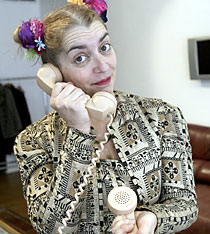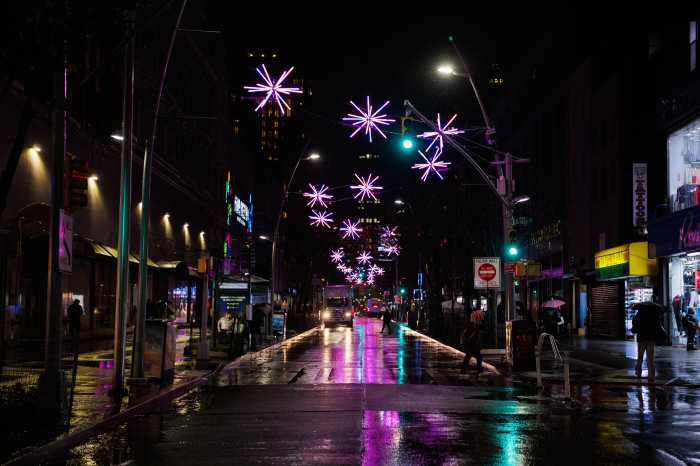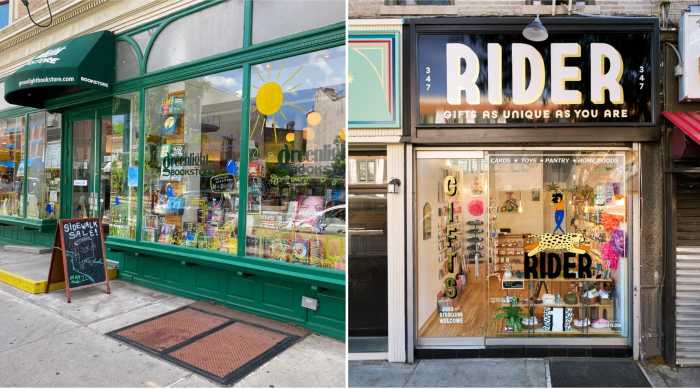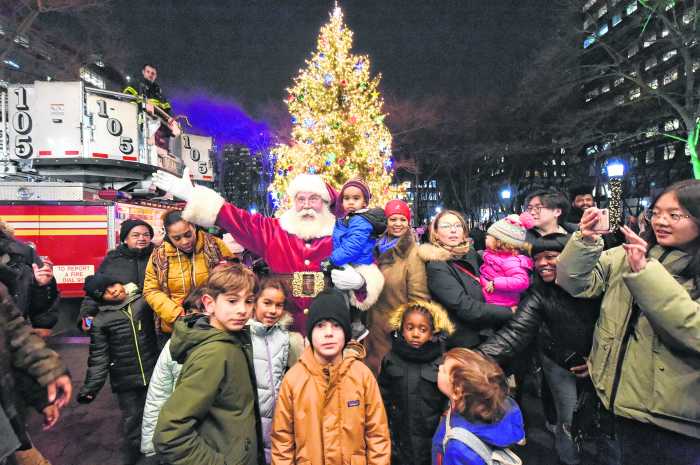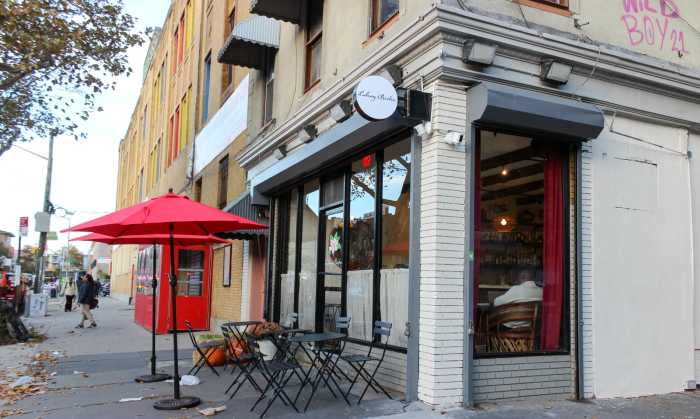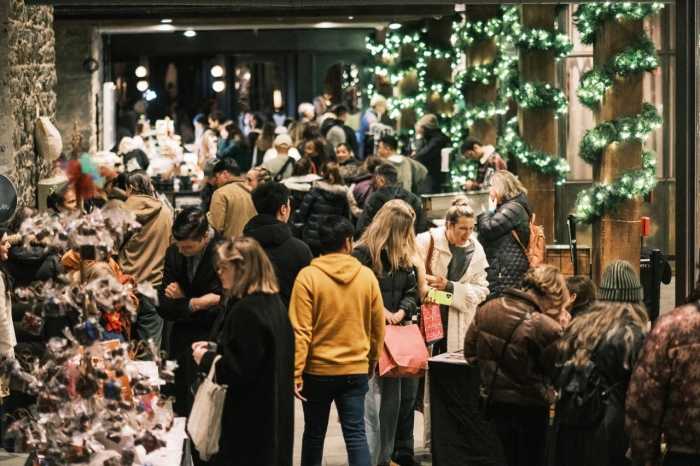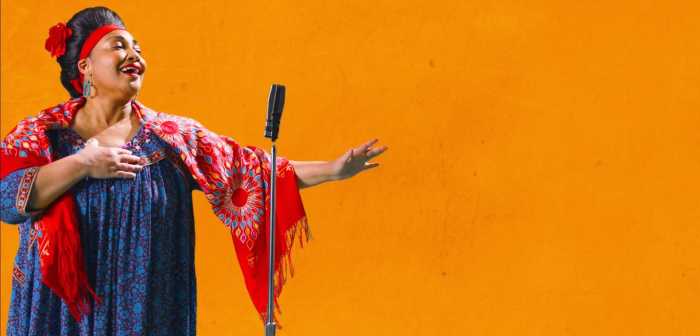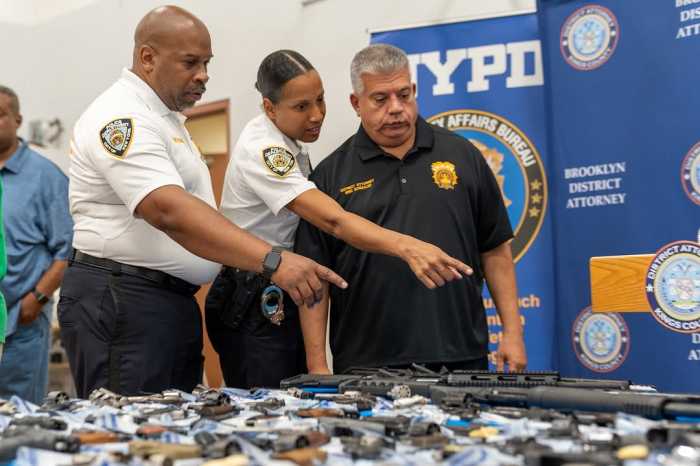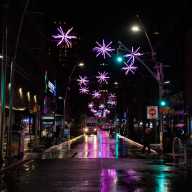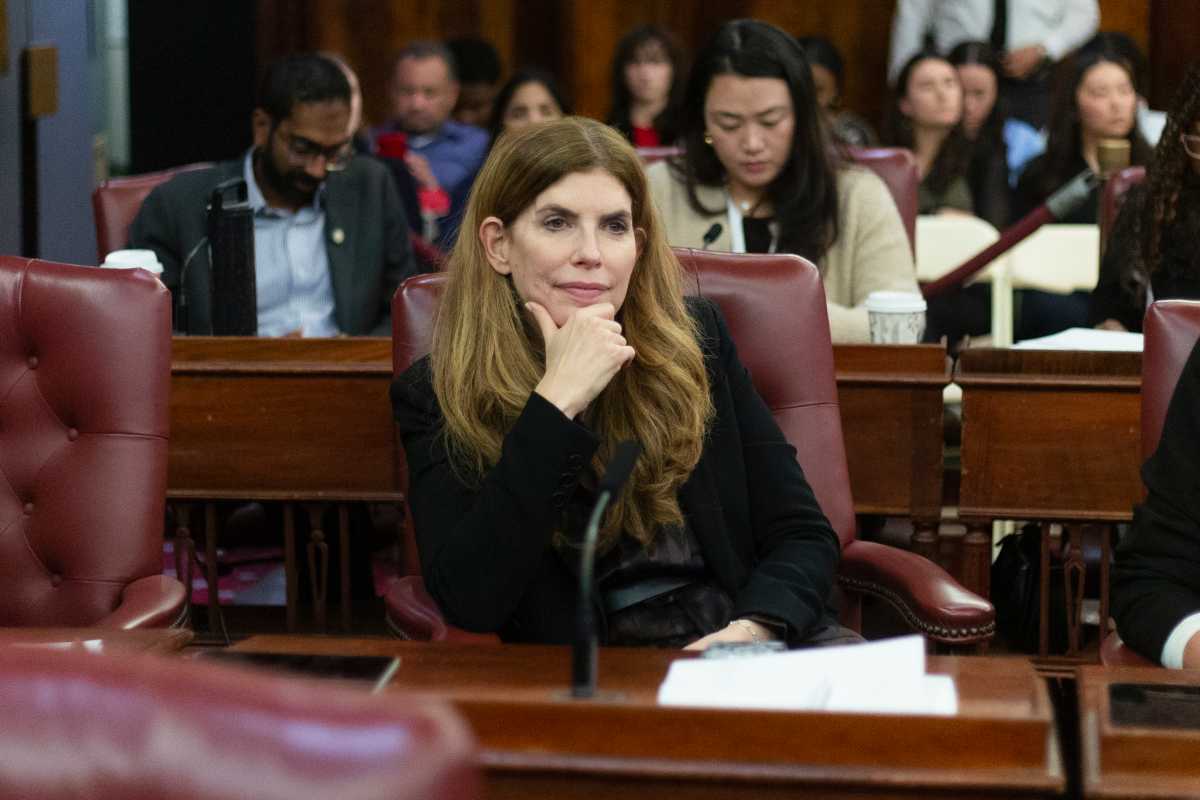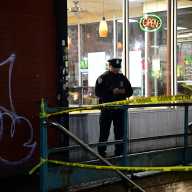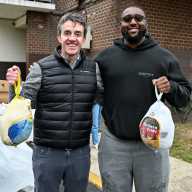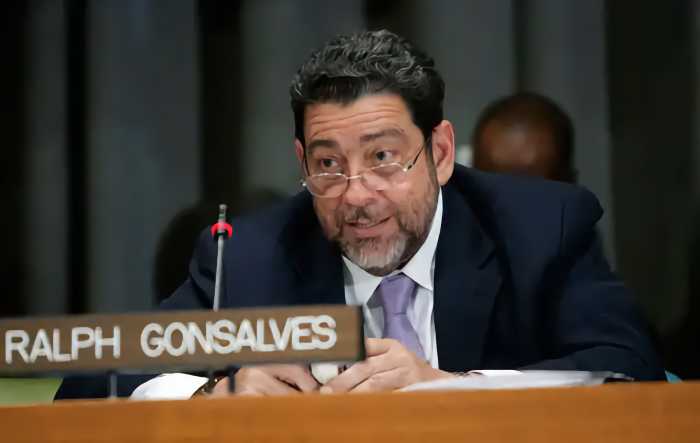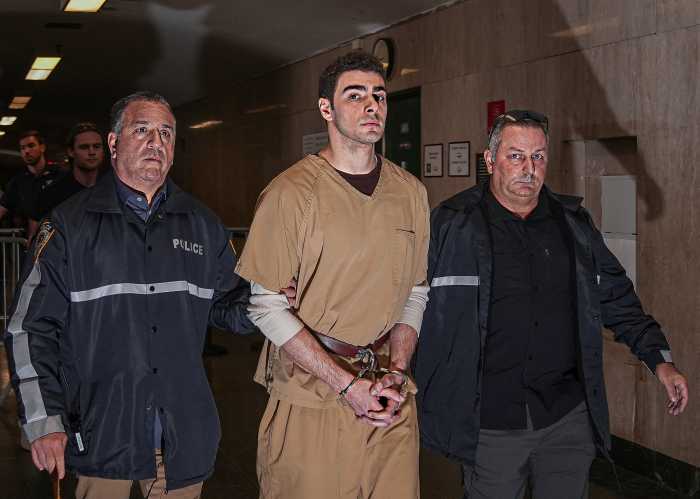"There is no sincerer love than the
love of food," the armchair says.
Strange that an armchair would speak? Sure, if it’s a run-of-the-mill
armchair. But the seat in question is called "Blabbermouth,"
and it’s a sculpture on display in Micro Museum’s "Silver"
exhibition, a celebration of the curators’ 25th wedding anniversary
and artworks they’ve created together.
"We’re interested in living art," says Micro Museum
co-owner, curator and artist Kathleen Laziza about the philosophy
she shares with her husband, William. Micro Museum’s mission
is to exhibit "impressive, labor-intensive," ground-breaking
work by living artists. Most of the works on display, whether
they’re live performance art or interactive installations, like
"Blabbermouth," are, in a sense, living.
"Blabbermouth" is a pastel-upholstered armchair with
a computer keyboard built in its right side, below the arm. When
the visitor sitting in the chair touches a key, statements by
the likes of George Bernard Shaw, Katherine Cebrian, Mark Twain
and Oscar Wilde boom from speakers in the room.
Another prominent work is "The Lumiano," an upright
piano with built-in colored circles that light up at the touch
of a key. Then there’s "Phone-I-Ture," a loveseat with
a phone built into each arm. Lifting the receiver automatically
rings the person next to you, and pressing the phones’ buttons
prompts colored cylinders placed inside a furniture-style TV,
called "3-D TV," to light up.
All of these works were created by Kathleen and William from
the late 1980s to 2000. Whereas the museum’s primary purpose
is to invite other artists to display their work, the art and
performances by the Lazizas are the exclusive focus of "Silver."
The intricate nature of their art defies description; it has
to be actively experienced.
"We’re trying to create the old ’Yule Log’ experience [with
’3-D TV’], where you actually participate," Kathleen says.
"Everything is so passive now."
Kathleen and William, 50 and 56, respectively, moved to New York
City in 1980. In her early 20s, Kathleen was trained in painting,
though she later switched to mostly "eclectic" performance
art choreography. William, who by day is a telecommunications
engineer, specializes in video-art and low-tech optics in his
other life as an artist. Living first in the East Village and
then in SoHo, the pair collaborated on choreographed performance
art in the 1980s. Pushed out of Manhattan by ever-rising rent,
the Lazizas moved to Boerum Hill in 1986.
"We loved this neighborhood as soon as we found it,"
Kathleen says. "It was Arabic, and William grew up in the
Middle East. I was Puerto Rican, and I grew up in Texas. Diversity
is important to us, and here you encounter lots of very interesting
people."
Good neighbors
In 1986, the Lazizas and their then 3-year-old son (they now
have two, ages 17 and 22) moved into the second floor of the
three-story building at 123 Smith St. In 1997, they bought the
building, moving their living space to the third floor, continuing
to exhibit art and to rent out rehearsal space on the second
floor.
In 2002, when the first floor tenant moved out, the Lazizas renovated
the space, and the museum moved to its current, street-level
location. They continue to rent out the second floor, mainly
to performing artists, on an hourly basis. The floor’s front
room serves musicians and the 19-foot by 38-foot rehearsal space
in the back gets used by dancers and martial arts classes.
"Artists need a place to be – a place to be understood,
a place that’s clean," says Kathleen. "I used to practice
dance in the East Village, and there would be sewage dripping
from the ceiling! Am I going to roll around in that? No way!
"It’s important to us that people are doing their best work
for the world and for New York City. We’re really dedicated to
that."
The Musician’s General Store on Court Street rents space at the
Micro Museum, where it conducts three classes a week.
"Holding music lessons in the Micro Museum has certainly
helped us," says Musicians General Store co-owner Mingo
Tull. "It’s a creative entity, so it’s sort of a no-brainer
to do music lessons there. I wish we had more venues like that.
There’s such a lack of facilities to showcase different types
of media."
The Lazizas pride themselves not only in running a space that
helps other artists, but in creating an exhibition space that
is family-friendly.
"We really pride ourselves on being accessible to children,"
Kathleen says. The exhibit currently visible through the museum’s
front window is called "Pond Effect," and incorporates
stacked, metallic-colored, cylindrical, plastic building blocks
arranged in circles and swirls, placed at floor level so that
children can rearrange them.
One installation, "Videograph," allows the viewer to
manipulate color patterns on an upward-facing TV monitor by placing
shapes on the monitor and by spinning the table in which the
monitor is embedded. "Videograph" was called an example
of "The art of the future" in the New York Times’ millennium
section on Jan. 1, 2000.
Another piece, "Spring Fever," is a collection of about
30 wearable blazers of varying styles that Kathleen "built"
by meticulously gluing craft flowers and leaves onto them. The
jackets are meant to be worn – often in street performances.
One shrug that is completely covered in rose petals took Kathleen
40 hours to create.
"We’re interested in labor-intensive art," she says.
That is also one of the criteria by which the Lazizas evaluate
potential exhibitors, with whom the museum is very selective.
Highlighted artists in the past have included Stephen Schriver,
who made minutely-constructed, detailed collages; J.T., who makes
huge paintings covered in "tiny, tiny" peaks of paint;
and Kari Ortez, a photographer whose photos represent "highly
crafted, bizarre narratives," according to Kathleen.
In 2006, Micro Museum debuts a new program, "Open Walls,"
for which the museum will hold an open call for artists’ work
every week, and will exhibit a different selection of work each
Saturday.
"Most museums are for showing the work of dead artists,
but we’re really looking from the living artist’s point of view.
What is the artist trying to say?" Kathleen explains. "The
name of the museum is metaphoric. It’s relatively small – ’micro,’
and it’s about looking very closely at living artists’ work."
The museum also produces "Spontaneous Combustion,"
an arts program that airs on BCAT the third Saturday of every
month.
"Complete strangers come up to me and say, ’It’s so great
what you’re doing,’" Kathleen says. "The neighbors
are very proud. We’re like the couple that made good."
On Jan. 7, 2006, Andy Cohen, a pianist
and composer, will perform an original work tailored to the "Lumiano"
at 2 pm and 4 pm at the Micro Museum (123 Smith St. at Pacific
Street in Boerum Hill). Refreshments will be served. The Micro
Museum is open to the public Saturdays, from noon to 7 pm. Admission
is $2. Admission to all special events is $10; $5 for students
and seniors. Event tickets available at the door 15 minutes prior;
reservations recommended.


